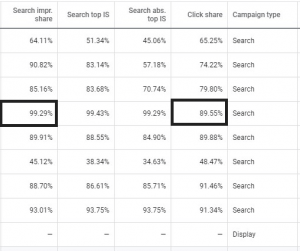People are practically glued to their smartphones — so why not take advantage of it?
It’s now easier than ever before to keep in touch with your customer base. Today’s consumers also expect companies to offer easy, convenient ways to communicate. Because of the changing world of digital marketing and consumer expectations, companies should use SMS messaging for not just marketing but also customer support.
U.S. consumers spend an average of five hours a day on their cell phones. But that time isn’t spent talking. A whopping 92% of people’s time on their cells is spent on apps for social media. If your customer support efforts mainly take place via email, calls, or online chat, these options aren’t the best use of anyone’s time. When it’s inconvenient for customers to contact your company, they can quickly become frustrated, confused, and annoyed with your brand. More and more companies are turning to mass text, SMS messaging, and automated texting for customer support. Will this work for your particular business? We’ll discuss who can benefit from customer service texting, and how to get started.
Why Is SMS Messaging an Effective Vehicle for Customer Support?
There’s a reason why more and more companies are turning to text support for their customers. SMS customer service messaging is incredibly convenient for both customers and businesses. It’s an affordable support option, and it’s also easy to use. For companies, it’s a very time-efficient model for offering clients the support they need before, during, and after the buying process. Plus, SMS message for customer support requires what the vast majority of consumers already have – a smartphone. Everyone should offer a customer support hotline. But for some, text messaging support can be even more advantageous. It’s a far more affordable support option for startups and small businesses too.
Automated text, mass text, and SMS messaging options can work for different types of businesses. Established brick-and-mortar businesses have it easier, and also harder than less established, digital companies. On a positive note, brick-and-mortar businesses that have been around for years already have an established customer base. Also, brick-and-mortar businesses have many options when it comes to entering the digital sphere.
Unfortunately, though, if established brick-and-mortars don’t evolve, they may start losing customers to more modern competitors. Brick-and-mortar companies that implement text support options can increase loyalty within their existing customer base.
Online businesses and brick-and-mortars offering SMS messaging for customer support can also help them capture more market share.
What Are Some Other Significant Benefits to Implementing Customer Service Texting?
Customer support is absolutely critical to running a successful business. More than half of surveyed customers state their expectations for support are higher than they were a year ago. Investing in better customer support models is also crucial to improving your brand image. For example, a customer support promoter is more valuable than a detractor. Surveys have found that a promoter is up to 1400% more valuable to brands than a detractor. Offering convenient and easy customer support through text is one way to exceed customer expectations. When your brand delivers, happy customers are an excellent word-of-mouth form of advertising.
Tips for Getting Started With SMS Customer Support
A well-trained and friendly customer support employee is vital for your business. But employing several at once isn’t always affordable. For some companies, staffing full-time customer support personnel may be cost-prohibitive. This is especially true for startups and small businesses.
One person can handle multiple texts from customers at a time versus phone calls. For companies in this boat, automated texting is a priceless option. But if you’re going to implement automated texting and text for customer support, keep these tips and best practices in mind:
1. Leave the Robot Voice at Home
Surveys have found that 75% of consumers would rather text with customer support than communicate with them via social media. What this indicates is that SMS customer service messaging is easier and more flexible, and consumers like it. But what businesses need to keep in mind is that text is also a more personalized form of communication. As such, customers expect texts to read like a human is writing them. If your business is going to implement automated text, you need to use personalized messages with a human touch. Think of the text as your brand providing the same type of service as a phone call. Try to sound like a person and not a robot in the message. Customers will feel valued and understood if they feel like they’re texting with a real person.
2. Remember to Follow-Up
When a customer texts-in a question to your support automation, it’s easy to answer their query. What’s more difficult is going beyond their expectations. If you want to really impress customers, show you care with a follow-up text. You don’t have to limit yourself here either. For example, show you value a customer with a text follow-up that offers a discount code if they haven’t visited your business in a while.
These types of follow-up texts are easy for clients to answer. They also offer a personalized, human touch. Even better, these follow-up texts let your business exceed customer expectations for support.
3. Send Reminders via Automated Text
People lead crazy-busy lives these days. It’s all too easy to forget an appointment. One excellent customer service texting option you can use is appointment reminders. These are incredibly helpful for brick-and-mortar companies. Clients can wait for weeks or months to get in. Forgetting an appointment can mean waiting even longer for service.
SMS messaging gives companies the ability to send automated reminder texts. It’s possible to pre-schedule the texts as soon as the customer makes the appointment. Brands can also make it simple for customers to text-in a confirmation response. Reminding busy customers with a text is much less intrusive and inconvenient than trying to call them. Send an email instead, and you risk having it get lost in a crowded inbox.
4. Use Text Support as a One-Stop-Shop
One of the best parts of SMS support is that you can deliver all your customer support over this one platform. With live chat, customers often have complex problems they want you to solve. In many cases, those chat conversations will move to a phone call. Social media support usually moves to email. Customer surveys have found that people get frustrated when they need to move to a different support channel.
Offering different support channels adds unnecessary complication to your business process. It’s also expensive for companies to offer so many support avenues. Using text instead can cut down on those support channels. You’ll save money and still solve your customers’ problems in one easy, convenient place. You can complete a support query all within a text thread. One example of this is how government disastrous weather alerts work. People who’ve opted-in for emergency texts are:
- Alerted of a tornado, storm, or another potential disaster via text
- Offered options for shelters
- Given directions to shelters
And this all takes place via text. Automated text messaging is an extremely versatile, affordable, and convenient customer support option. Texts can give people important web links, while also offering critical information at the same time.
5. Be Clear When Texting
Texts are limited to a specific number of characters. Messages must be clear, concise, and straight-to-the-point. If you need to give a customer a long explanation, or you want to use flashy language to sell something, leave it to email. Customer service mass texting requires you to give brief explanations. Always highlight your key points in the text.
Offer relevant links so customers can learn more, instead of giving a long-winded explanation in text. Brands need to make it a priority always to provide and add value. Avoid annoying or confusing customers with a novel’s worth of words in text messages. Brief, engaging messages work the best and will have the most significant impact. Customers are also more likely to read and understand shorter messages.
A version of this post originally appeared here.
Business & Finance Articles on Business 2 Community
(40)







